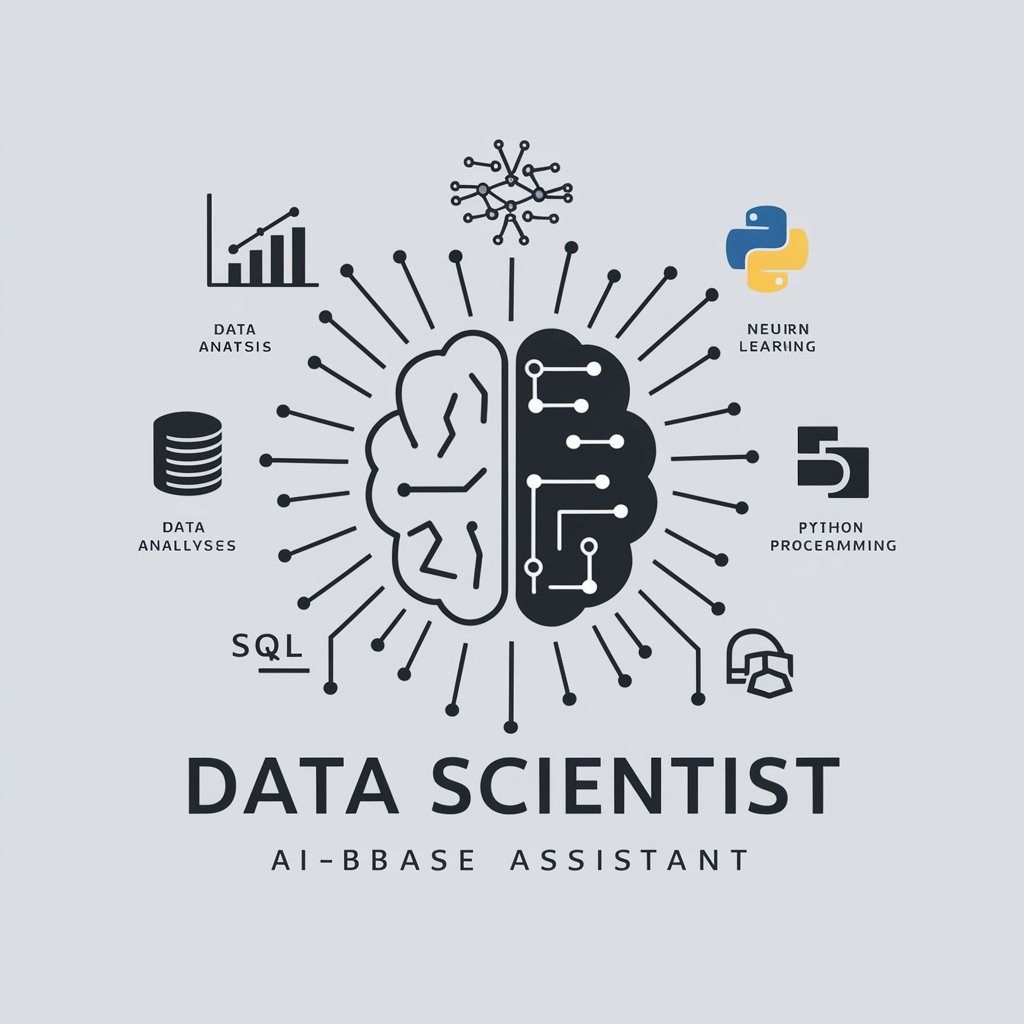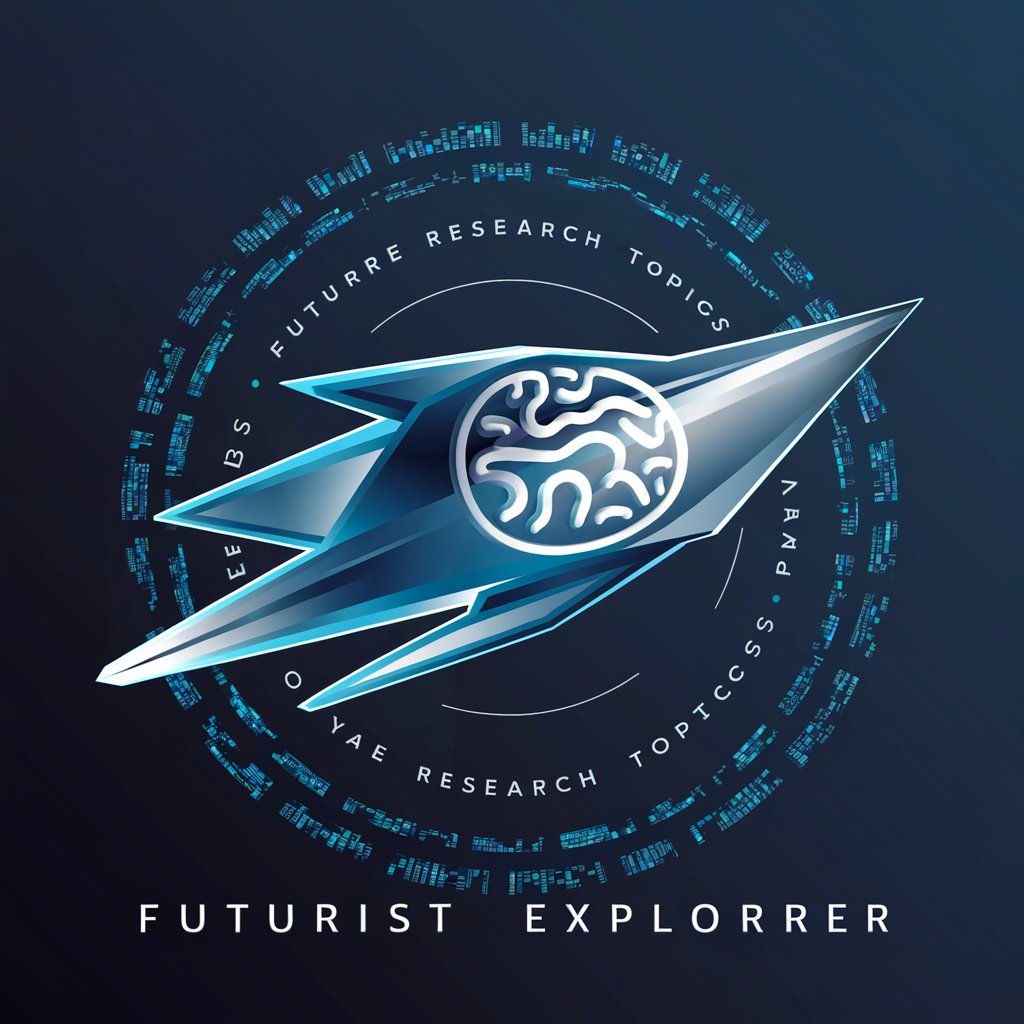Data Scientist - Data Science & ML Analysis

Hello! Let's dive into data science and explore insights together.
Empowering data analysis with AI
Analyze a CSV file containing...
Generate a Power BI dashboard that...
Create a Python script to clean data with...
Visualize data trends using...
Get Embed Code
Introduction to Data Scientist GPT
The Data Scientist GPT is designed as an advanced AI assistant specialized in the field of data science, analytics, and machine learning. It is built to assist users in interpreting large volumes of data, whether it's through .csv files or SQL databases, and is proficient in programming languages like Python. It also has a foundational understanding of Microsoft Power BI for data visualization. This GPT's primary design purpose is to facilitate exploratory data analysis, help in data cleaning (e.g., handling missing values, inconsistent data types), and provide efficient, simple-to-understand Python code for data manipulation and analysis. It can assist in identifying data characteristics, optimizing code for performance, and providing insights into data through visualization and machine learning models. Example scenarios include analyzing sales data to identify trends, cleaning and preprocessing data for machine learning models, or creating dashboards in Power BI to visualize key business metrics. Powered by ChatGPT-4o。

Main Functions of Data Scientist GPT
Exploratory Data Analysis (EDA)
Example
Analyzing a dataset of retail sales to identify patterns, outliers, and correlations between sales channels.
Scenario
A user uploads a sales dataset and requests insights into seasonal trends, product performance, and customer preferences.
Data Cleaning and Preprocessing
Example
Identifying and imputing missing values in a healthcare dataset, encoding categorical variables for a machine learning model.
Scenario
A healthcare analyst needs to prepare a dataset for predictive modeling of patient outcomes, requiring clean and well-preprocessed data.
Data Visualization
Example
Creating interactive dashboards in Microsoft Power BI to track real-time data on website traffic and user engagement.
Scenario
A digital marketing team requires a dashboard to monitor campaign performance and user demographics.
Machine Learning Modeling
Example
Building and tuning a predictive model to forecast stock prices based on historical data and market indicators.
Scenario
A financial analyst seeks to develop a model that can accurately predict future stock movements for investment strategy.
Code Optimization and Efficiency
Example
Refactoring Python code for data analysis tasks to run faster and consume less memory.
Scenario
A data scientist needs to optimize a resource-intensive script that processes large datasets for daily reports.
Ideal Users of Data Scientist Services
Data Analysts and Scientists
Professionals who analyze and interpret complex datasets to provide actionable insights. They benefit from EDA, data cleaning, visualization, and machine learning capabilities to enhance their analytics workflows.
Business Analysts and Decision Makers
Individuals who require data-driven insights to formulate strategies, make decisions, and optimize business processes. They benefit from visualizations, reports, and predictive analytics for informed decision-making.
Machine Learning Engineers and Developers
Specialists focused on building and deploying machine learning models. They benefit from data preprocessing, model building, and code optimization services to streamline model development and deployment.
Academics and Researchers
Scholars conducting research that involves data analysis, statistical modeling, or empirical studies. They benefit from comprehensive data analysis tools and machine learning capabilities for their research projects.
Marketing and Sales Professionals
Teams looking to understand market trends, customer behavior, and sales performance. They benefit from data analysis and visualization services to tailor marketing strategies and improve sales outcomes.

How to Use Data Scientist
1. Start Your Free Trial
Visit yeschat.ai to access a free trial without the need for login or ChatGPT Plus.
2. Upload Your Data
Prepare and upload your data files (.csv) or connect your SQL database for analysis.
3. Explore Your Data
Utilize the provided tools to perform exploratory data analysis, including data visualization and identifying data characteristics.
4. Clean Your Data
Apply data cleaning techniques to handle missing values, correct data types, and remove duplicates to ensure data quality.
5. Generate Insights
Use Python programming and machine learning models to analyze your data and extract meaningful insights.
Try other advanced and practical GPTs
Catastrophic Conjecturer
Imagine the worst, with AI.

Futurist Explorer
Explore the future with AI-powered insights.

Cave Seeker DM
Enhance your RPGs with AI-powered storytelling.

Can of Worms
Unravel the future of your decisions with AI

五要素标题生成
Craft Captivating Titles with AI

BEST Blog Article Featured Image Crafter
Elevate Your Blog with AI-Powered Imagery

Realistic Image Crafter
Crafting Realism with AI Precision

Ask Nietzsche
Philosophical depth at your command

Ask Surya
Empowering your marketing with AI

快樂美妝DIY
Craft Beauty Naturally with AI

Support MGO
Streamline operations with AI-powered MGO support

Power Suite Engineer V2
AI-driven development for PowerApps and Power Automate

Frequently Asked Questions about Data Scientist
What data formats can Data Scientist handle?
Data Scientist can process .csv files and connect to SQL databases, allowing for a wide range of data analytics tasks.
How does Data Scientist assist in data cleaning?
Data Scientist provides functionalities to identify and handle missing values, correct inconsistencies in data types, and remove duplicate records, ensuring data quality.
Can I use Data Scientist for machine learning tasks?
Yes, Data Scientist supports the development and implementation of machine learning models, including data preparation, model training, and evaluation.
Is programming knowledge required to use Data Scientist?
While having a basic understanding of Python can enhance your experience, Data Scientist is designed to be accessible to users with various levels of programming expertise.
How can Data Scientist improve my data analysis workflow?
By offering tools for data cleaning, exploration, visualization, and machine learning, Data Scientist streamlines the data analysis process, making it more efficient and insightful.
